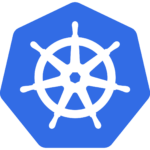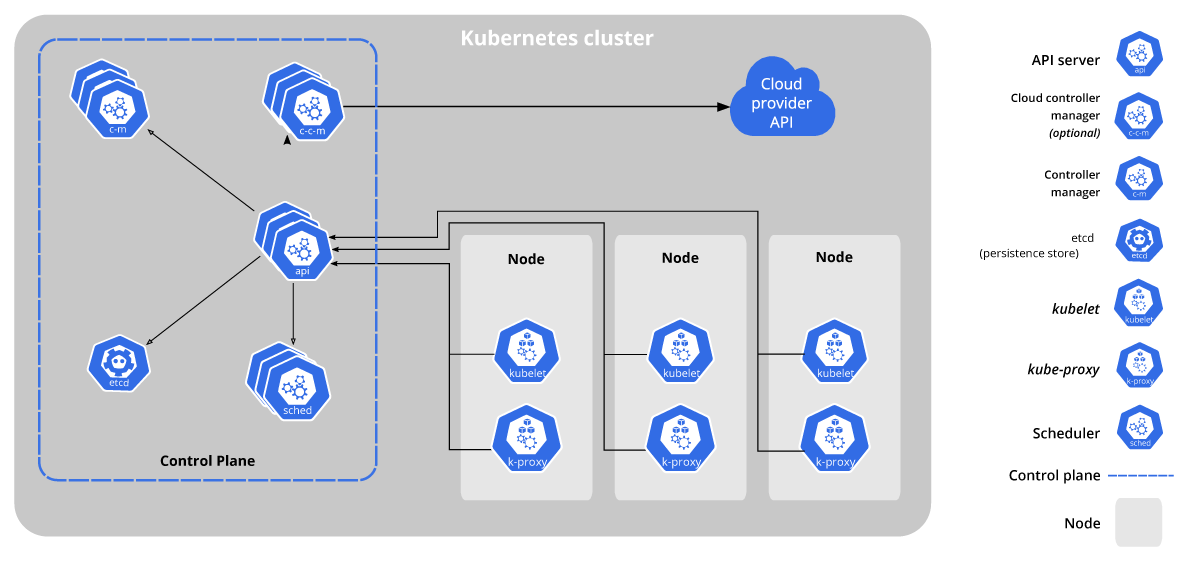What’s the Difference Between Docker and Kubernetes?
The most widely used tools in the modern cloud-native container ecosystem are Docker and Kubernetes. These two open platforms have enabled the container revolution to thrive, thanks to the utility they provide and the openness of their communities. Though often used together, Docker and Kubernetes accomplish different goals. This difference is foundational to understanding how modern containers are built, deployed and managed in production.
The increase in container adoption has risen in parallel with the rise of microservices. Containers are a helpful way to package software for these applications as they isolate code with all dependencies necessary for runtime. But as the number of containers rises, managing them at scale becomes a hurdle. Thus, DevOps engineers often implement standard tools to generate containers and orchestrate their deployment to maximize efficiency and resource optimization.
For those readers with short attention spans, the TL;DR is that Docker is about building individual containers while Kubernetes is about managing and orchestrating large numbers of them. That’s about as basic as we can make it. Below, we’ll go beyond basic to compare Docker and Kubernetes, explore their respective architectures and consider the benefits and drawbacks of using each.
What’s Docker?
 Docker is a utility for packaging and running containers. Docker helps build standard containers that include all the necessary components required for them to function in isolation, including code, dependencies and libraries. Docker is technically more of a container management tool than a container format.
Docker is a utility for packaging and running containers. Docker helps build standard containers that include all the necessary components required for them to function in isolation, including code, dependencies and libraries. Docker is technically more of a container management tool than a container format.
Developers will typically interact with Docker through a command line interface (CLI) to communicate with the Docker client to run commands like docker build or docker run. These are translated as API commands to the Docker daemon dockerd, which directs the system to build the environment. A Docker registry stores Docker images, which are executable templates. Thus, Docker containers are essentially instances of these images. Docker Hub is a large public registry full of many helpful, pre-written container images.

Docker was initially developed in 2013 and has defined the modern container movement since then. The Docker image format has been donated as an open standard and now is referred to as Open Container Initiative (OCI) image specification. When folks discuss Docker containers, they usually refer to Docker, the container packager tool. This is not to be confused with Docker Inc., the company.
Benefits and Drawbacks of Docker
There are many benefits to using Docker to build containers. One is portability—you can run these containers wherever you want, no matter the host. Another benefit is security—since individual containers run on their own namespace, they are isolated quite well. Containers tend to fit agile development methodologies well and increase efficiency for CI/CD processes. Docker images are also reusable and shareable across projects.
As containers are meant to be ephemeral, persistent data storage can be an issue. Of course, this is more of a problem with containers in general and not specific to Docker. Docker is a better fit for microservices-based applications and might not be a good fit for monolithic development. Though Docker containers are relatively efficient, they inherently introduce additional layers, which adds additional overhead compared to applications running directly on a bare metal platform. Lastly, containers present new security issues, making it necessary to scan for common vulnerabilities.
What’s Kubernetes?
 Kubernetes, often abbreviated as K8s, is a robust, sophisticated toolset engineered to automate many application life cycle duties. K8s is like the ultimate game of Tetris—it chooses the placement of containers to optimize computing resources, “orchestrating” where these workloads end up. It also provides self-healing capabilities to automatically repair and restart containers if they fail.
Kubernetes, often abbreviated as K8s, is a robust, sophisticated toolset engineered to automate many application life cycle duties. K8s is like the ultimate game of Tetris—it chooses the placement of containers to optimize computing resources, “orchestrating” where these workloads end up. It also provides self-healing capabilities to automatically repair and restart containers if they fail.
Understanding the architecture of Kubernetes is a bit like peeling back the layers of an onion. All Kubernetes deployments have at least one cluster. A cluster contains nodes. These nodes host pods. These pods include a running set of containers. A Kubernetes instance has a control plane to manage all these components.
This design may seem like overkill, but it’s necessary to ensure the fault tolerance and high availability that Kubernetes promises. There are many other important K8s components at work here—they include kubectl, the CLI for managing Kubernetes clusters, kube-scheduler, which manages availability and performance and kubelet, the main agent that runs on each pod. Kubernetes can be installed on Linux, macOS or Windows, or accessed through a web UI or REST API.

K8s was first developed as an internal tool called Borg at Google and was made open source in 2014. Out of the container orchestrator battles of the 20-teens, Kubernetes emerged victorious as the leading platform, besting Apache Mesos, Docker Swarm and Nomad. K8s has been a graduated CNCF project since 2018. Fast fact: there are eight letters between the ‘K’ and ‘s’ in Kubernetes—that’s where the abbreviation K8s comes from.
Benefits and Drawbacks of K8s
Kubernetes is very extensible and automates a ton of common operations. It addresses the need for enterprises to commonly orchestrate container deployment. But K8s does more than that, aiding in service discovery, load balancing and delivering reliability benefits. Kubernetes also enjoys a vibrant open source community which correlates to much co-building around the platform and contributes many compatible tools.
There are potential downsides to using Kubernetes. It’s good to remember that Kubernetes was born at Google, and that Google runs billions of containers each week. They built the platform with massive enterprise-scale use in mind. K8s thus may be overkill for smaller projects. Kubernetes also does require significant upfront training, and, once running, it can be a lot to maintain and update over time, especially when managing many clusters.
As a result, a good deal of Kubernetes anti-patterns plague adoptions. Stateful Kubernetes deployments require some extra maneuvering. Lastly, K8s grants unparalleled power to administrators, but security can suffer if privileges are misconfigured.
Docker vs. Kubernetes: What’s The Difference?
Both Docker and Kubernetes are open cloud-native technologies. And, major cloud service providers support components of both Docker and Kubernetes in their managed offerings. The difference between the two is that Docker is about packaging containerized applications on a single node and Kubernetes is meant to run them across a cluster. Since these packages accomplish different things, they are often used in tandem.
Of course, Docker and Kubernetes can be used independently. Whereas a large enterprise may benefit from Kubernetes and can support its maintenance, a smaller project may benefit from just adopting Docker. Or, a company may utilize Docker or OCI containers with another container scheduler. Similarly, Kubernetes is most commonly used with Docker containers, but it can work with other container types and runtimes.
In 2020, Kubernetes announced it would deprecate support for the Docker container engine in favor of other container engines like CRI-O and containerd. This removed the Dockershim to reduce moving parts, but Kubernetes still supports OCI and Docker image formats as well as Docker registries.
Final Thoughts
Both Docker and Kubernetes have emerged to respond to the needs of microservices development. In this paradigm, teams must rapidly iterate and deliver highly available services to end users. Containers are a lightweight, scalable way to deliver these applications, but managing them at scale poses challenges.
The end result of migrating to modern container management platforms are more rapid deployment and cost savings. For example, Booking.com built 500 applications on the platform in eight months using Kubernetes. Though utilities like K8s involve a learning curve and present ongoing maintenance hurdles, they are paving the way for a scalable future of container management.



